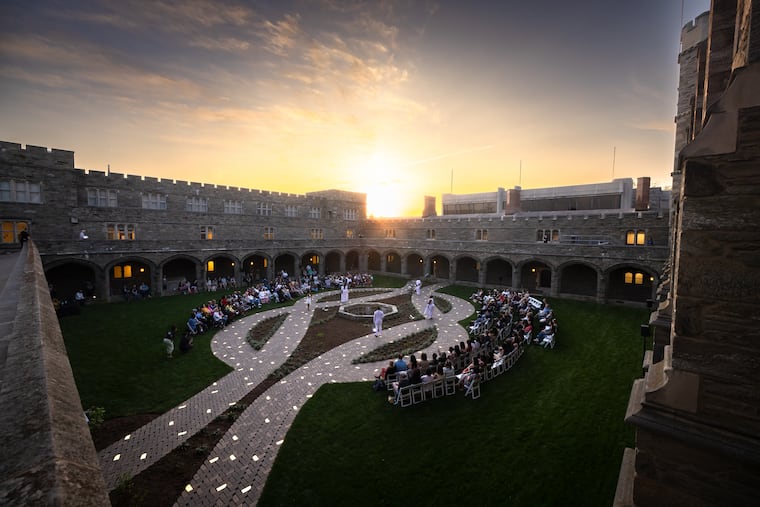New monument honors Bryn Mawr College’s first Black graduate, who walked a mile to attend class.
In a significant celebration of history and inclusivity, artist Nakisha Durrett unveiled her public artwork titled “Don’t Forget to Remember (Me)” at Bryn Mawr College on April 24, 2023. This commemorative piece honors Enid Cook, the institution’s first Black graduate, who emerged as a trailblazer in 1931 despite systemic barriers. Cook, a graduate of Dunbar High School in Washington D.C.—one of the country’s premier academic institutions for Black students—pursued a degree in chemistry and biology at Bryn Mawr College, where she faced discrimination and was denied on-campus housing.
The backdrop of this artwork is stark; M. Carey Thomas, the college’s president at the time, and other faculty members sought to restrict the enrollment of Black students. Nevertheless, through persistent advocacy, Cook gained admission to the college in 1927. However, Thomas and her successor, Marion Park, enforced a policy that required Cook to walk approximately one mile to class daily, further symbolizing the challenges faced by marginalized individuals in academic settings.
Durrett’s “Don’t Forget to Remember (Me)” serves as a multidimensional monument forged from approximately 10,000 custom clay bricks laid out in a “square knot” formation. This design symbolizes a commitment to acknowledge the contributions of Black individuals who historically supported the college’s establishment through their labor, many of whom remained unnamed. The artwork spans over 5,800 square feet, echoing the distance Cook traveled to access her education.
The monument not only honors Cook but also commemorates the Black service workers who contributed to the campus environment during the early 20th century. Engraved within the pathway are the names of 248 Black staff members whose efforts were historically overlooked. These bricks are uniquely glazed with soil from Perry House, a cultural center birthed from student activism in 1972, demanding a more inclusive curriculum.
Professor Monique Scott of Bryn Mawr’s Africana Studies and Museum Anthropology program reflects on the complex history of the campus, noting that the Cloisters—the site of the artwork—served as a space where Black students historically felt unwelcome. The introduction of this artwork aims to transform that energy, fostering an environment more inclusive to Black and Brown students.
As the narrative surrounding Bryn Mawr College evolves, transformative projects like Durrett’s are part of a broader effort to confront and illuminate the institution’s complicated history. The Art Remediating Campus Histories (ARCH) Project plays a critical role in uncovering these “untold stories,” acting as a catalyst for community conversations and educational initiatives following past student-led movements for reform.
In collaboration with the public art nonprofit Monument Lab, Durrett and a team of student researchers unearthed historic records detailing the lives of those who contributed to the college’s legacy, ultimately enriching the institution’s understanding of its own history. Durrett’s work exemplifies how public art can serve as a dynamic platform for exploring themes of race, history, and inclusion, reaffirming the importance of remembering and honoring all members of the community involved in shaping Bryn Mawr College’s legacy.
As the nation grapples with issues surrounding historical narratives, Durrett remains optimistic that her work will inspire ongoing dialogue, reflecting a hopeful trajectory towards acknowledging and honoring the complexities of the past.







